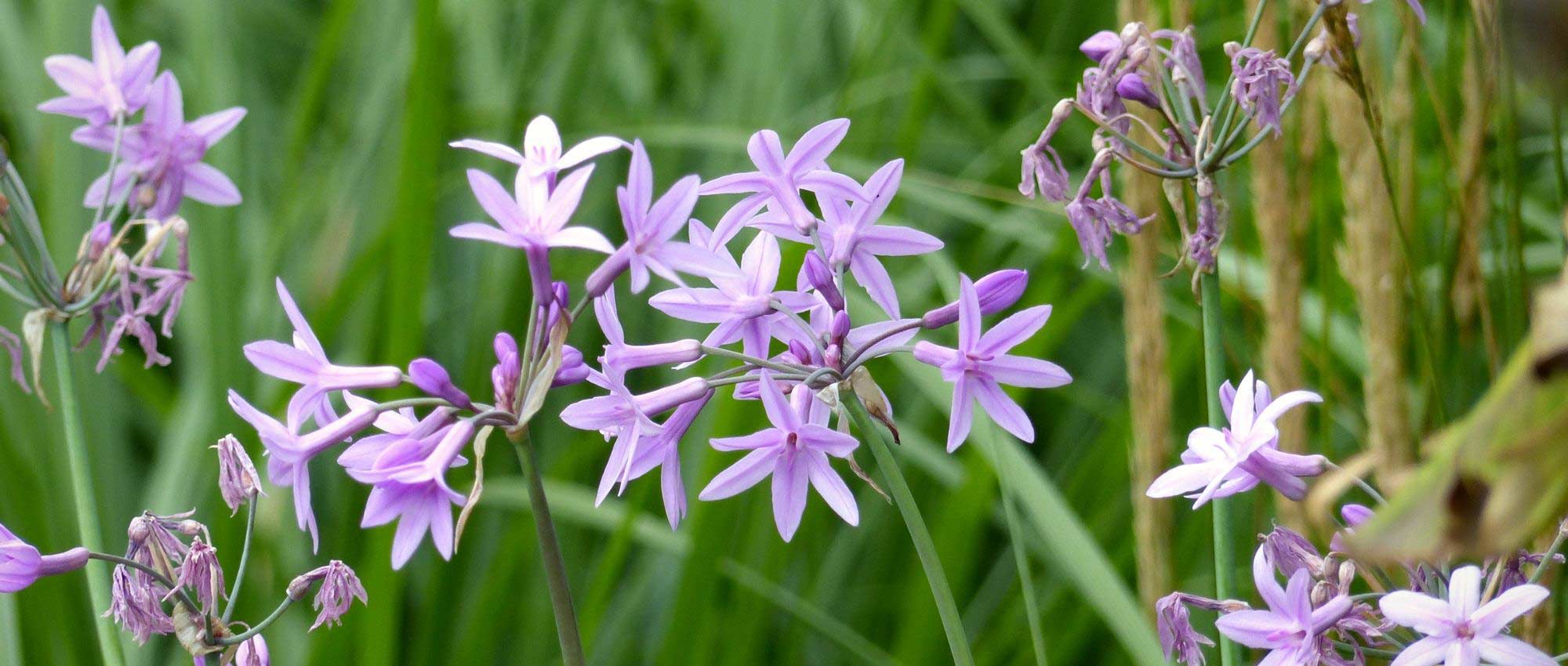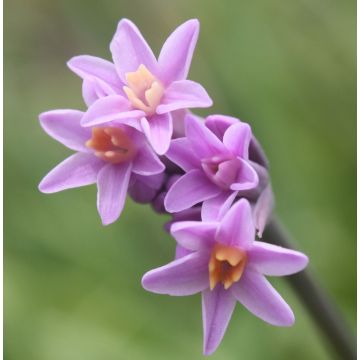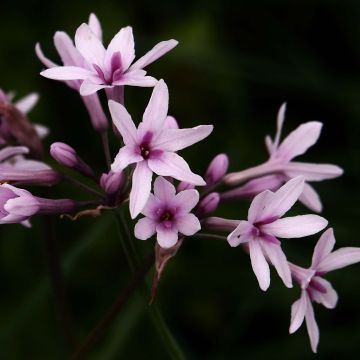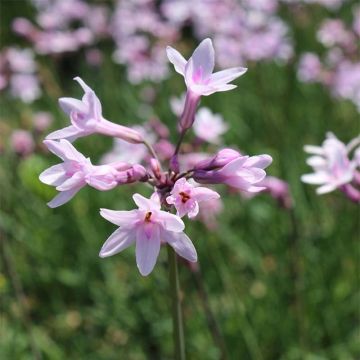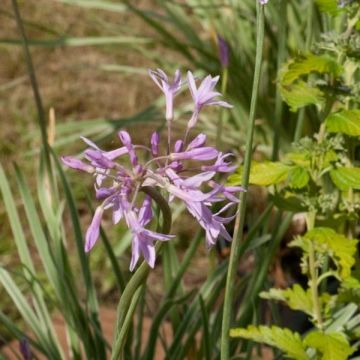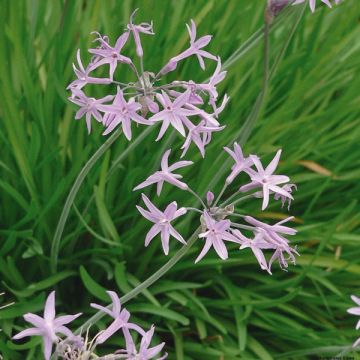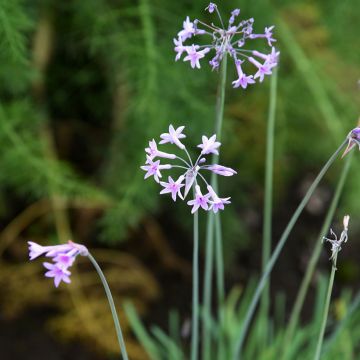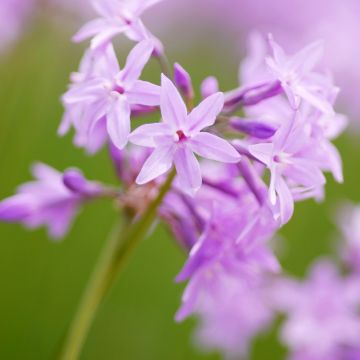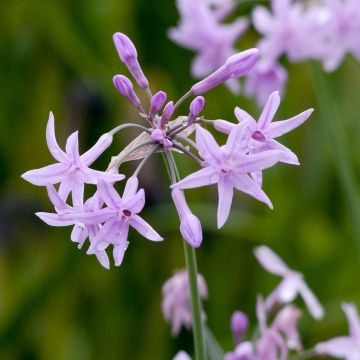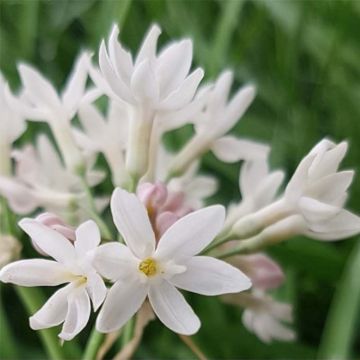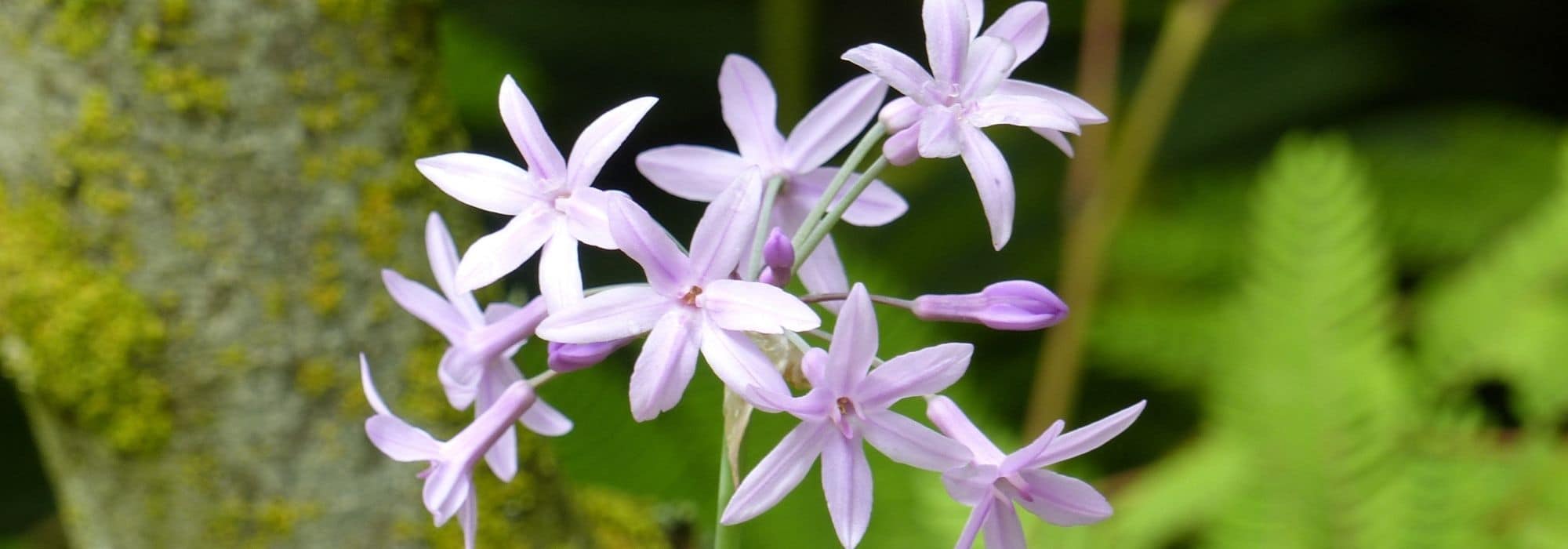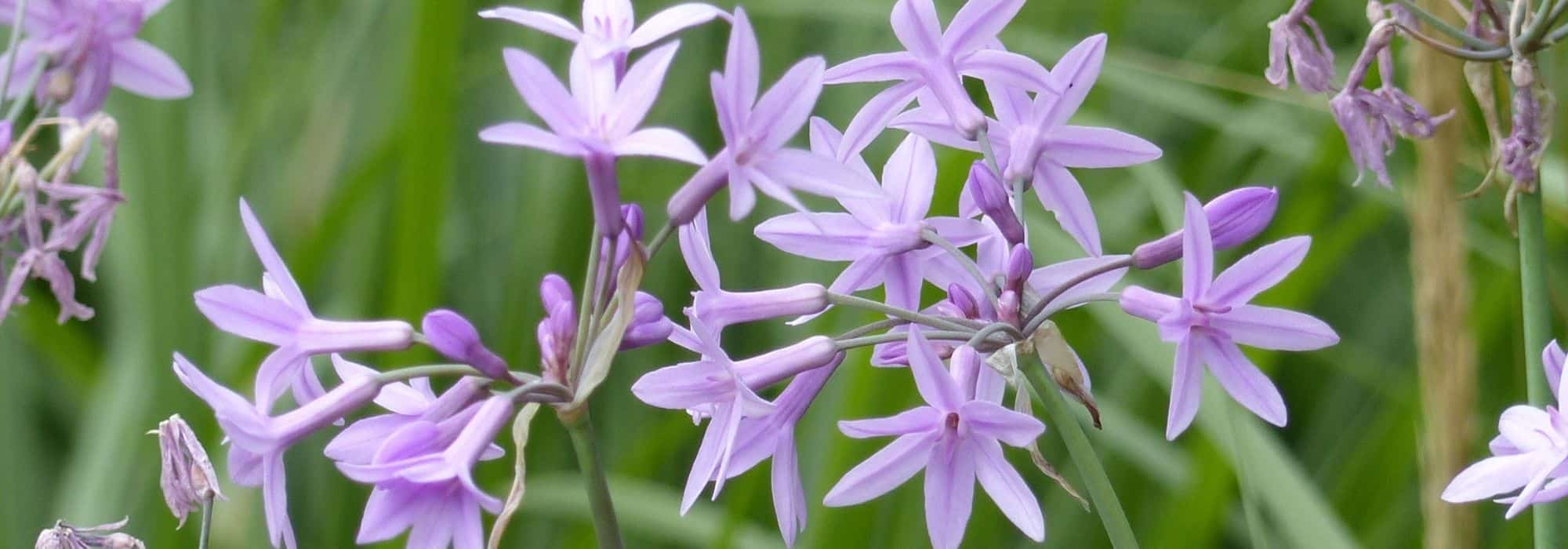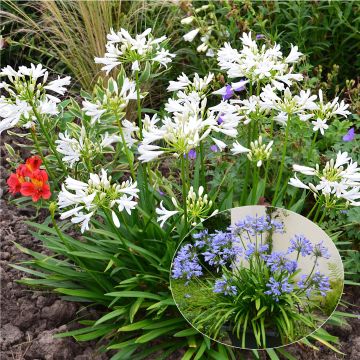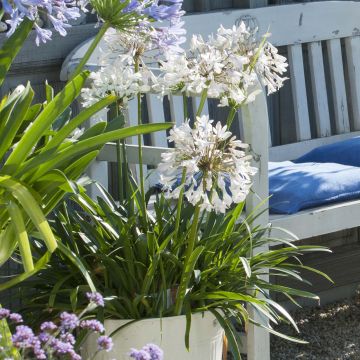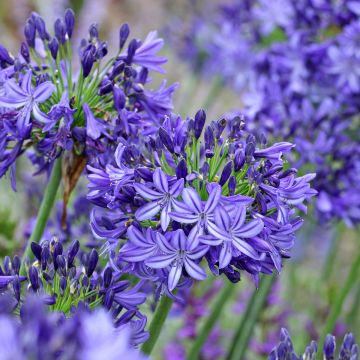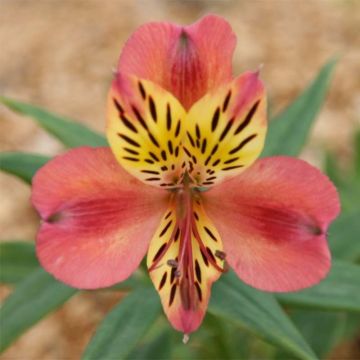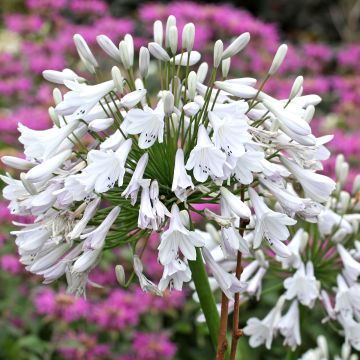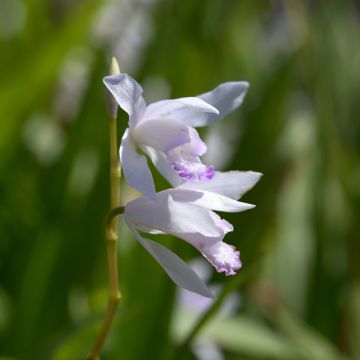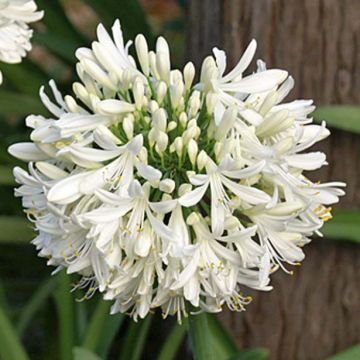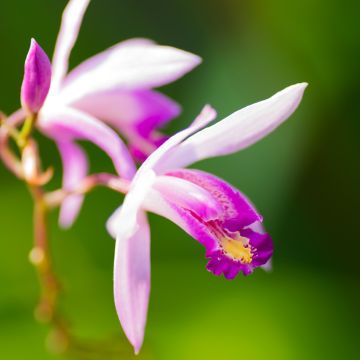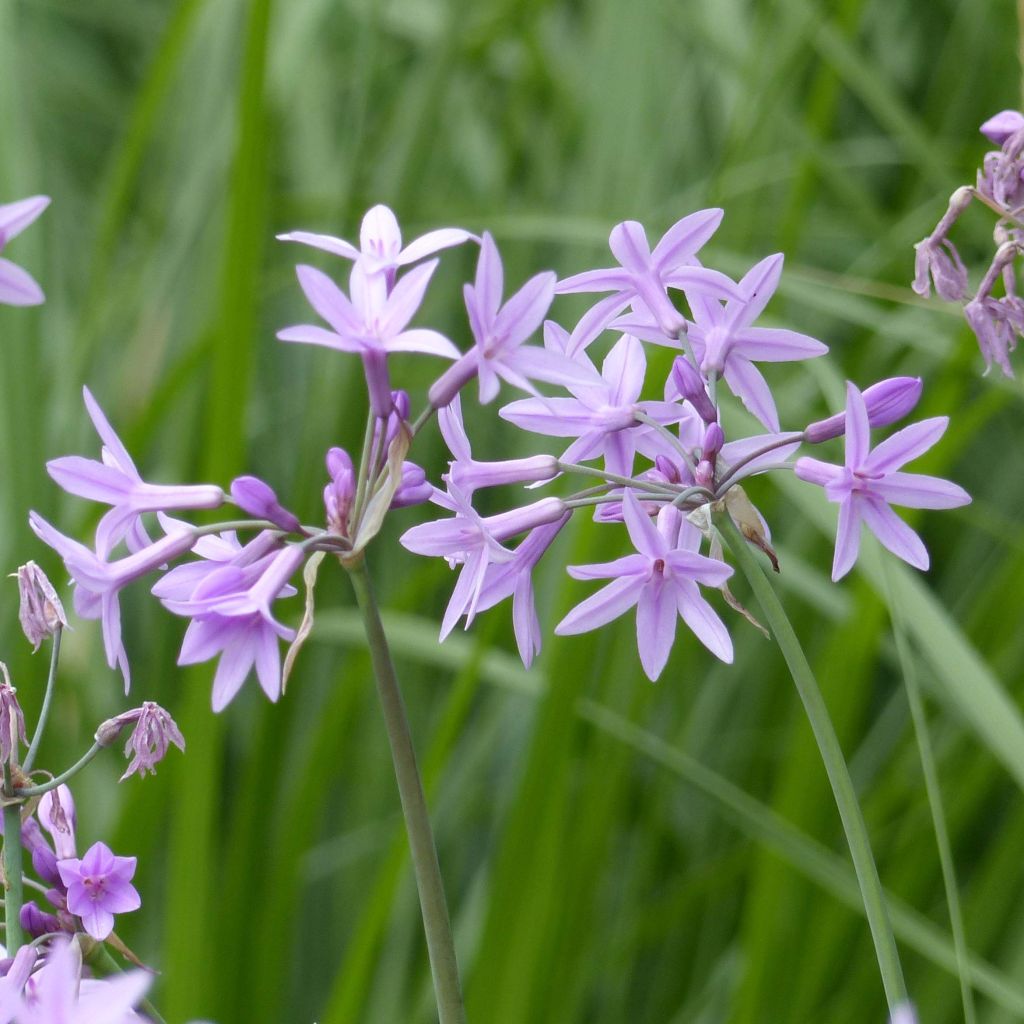

Tulbaghia violacea - Society Garlic
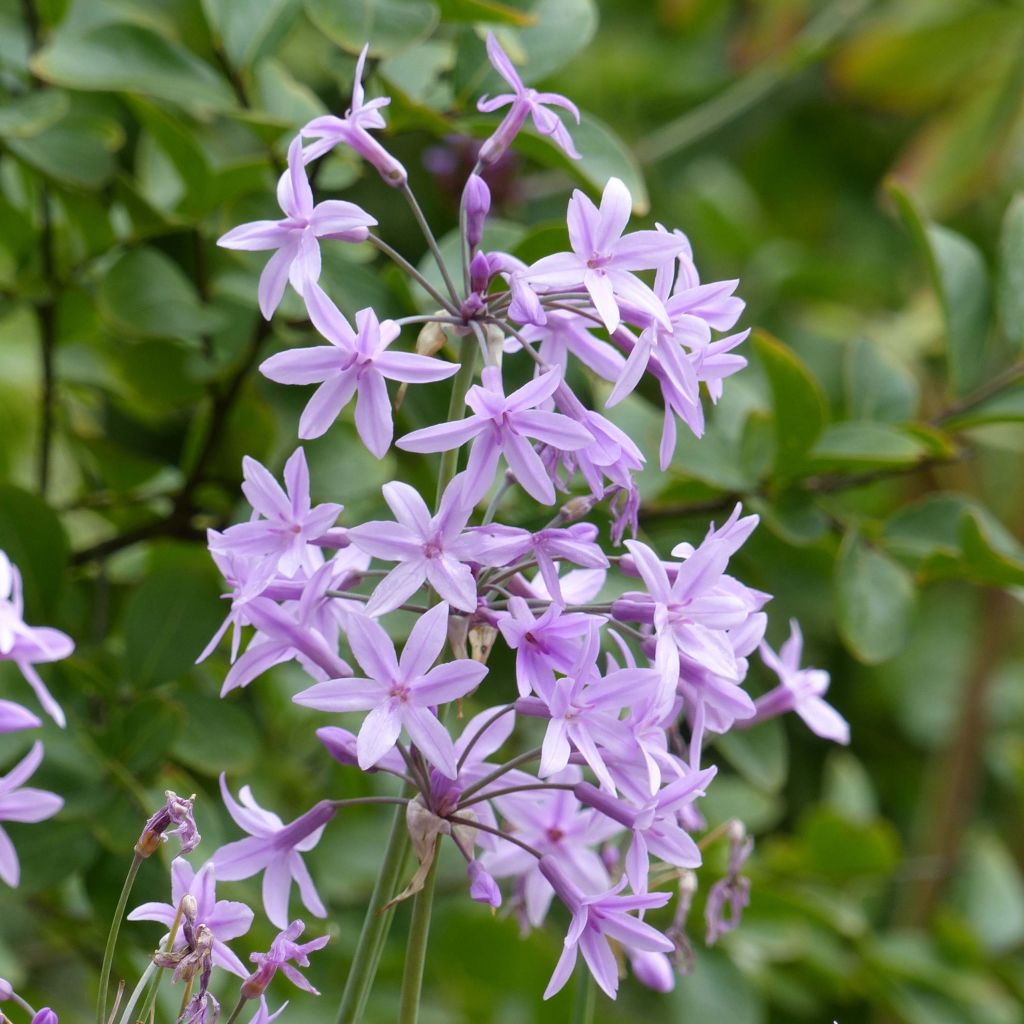

Tulbaghia violacea - Society Garlic
Tulbaghia violacea - Society Garlic
Tulbaghia violacea
Society Garlic
Lovely curiosity, strong taste of garlic, easy start
francis, 25/11/2024
Special offer!
Receive a €20 voucher for any order over €90 (excluding delivery costs, credit notes, and plastic-free options)!
1- Add your favorite plants to your cart.
2- Once you have reached €90, confirm your order (you can even choose the delivery date!).
3- As soon as your order is shipped, you will receive an email containing your voucher code, valid for 3 months (90 days).
Your voucher is unique and can only be used once, for any order with a minimum value of €20, excluding delivery costs.
Can be combined with other current offers, non-divisible and non-refundable.
Home or relay delivery (depending on size and destination)
Schedule delivery date,
and select date in basket
This plant carries a 6 months recovery warranty
More information
We guarantee the quality of our plants for a full growing cycle, and will replace at our expense any plant that fails to recover under normal climatic and planting conditions.

Does this plant fit my garden?
Set up your Plantfit profile →
Description
Tulbaghia violacea is a lovely African bulbous plant, which forms a clump of grey-green leaves resembling garlic, and from which numerous small pink star-shaped flowers emerge in umbels throughout the summer. Quite sensitive to cold, it can be planted outside without risk in regions where the temperature does not drop below -10°C (14°F), in a cool or slightly dry, light, and well-drained soil. Elsewhere, it will be easy to cultivate in a pot, and should be protected during winter.
Tulbaghia violacea belongs to the botanical family Amaryllidaceae. Native to South Africa, it grows in meadows in the eastern part of the country and in some adjacent countries. The plant's roots are tuberous, allowing it to slowly grow by forming a thick and fleshy stump. The narrow and flexible leaves are in shades of green with a touch of grey, and are semi-evergreen depending on the climate. Tulbaghia is a close relative of ornamental garlic, and shares with them a very pronounced odour when the leaves are crushed, or even at a distance when it is hot. Tulbaghias are also edible and can be used in cooking like chives! Between June and October, the clump continuously produces numerous slender stems, each with a false umbel consisting of several flowers with 6 fused petals at the base, forming a small star. These flowers are also edible. The buds, dark pink, give rise to charming pink flowers, sometimes lilac, with petals often marked with a darker line. The plant reaches about 45 cm (18in) in height at full bloom, with a diameter of 30 cm (12in).
Tulbaghia violacea is a resistant plant, capable of enduring periods of drought. However, it will be more beautiful and more floriferous if the soil does not dry out too much during the summer, and it will prefer an oceanic or coastal climate rather than a very hot Mediterranean climate. Plant the bulb at a depth of about 15 cm (6in); a good mulch will help limit water loss through evaporation, but it is better to use a compost mulch that retains less moisture than a layer of leaves, for example. Excess water is indeed what the plant dislikes the most, especially in winter, as well as cold temperatures, it can withstand up to -10°C (14°F) in well-drained soil. Full sun or partial shade will suit it perfectly, as long as the substrate is loose, well-drained, and not too poor. It is easy to divide the plant from time to time in spring. Sometimes, the plant self-seeds spontaneously, which allows you to create repetition in your flower beds.
In a rockery or in a pot, associate your Tulbaghia with other plants such as small agapanthus, African pyrethrum, or even silver wormwood, all on a carpet of the delightful Acaena 'Blue Haze'.
Tulbaghia violacea - Society Garlic in pictures
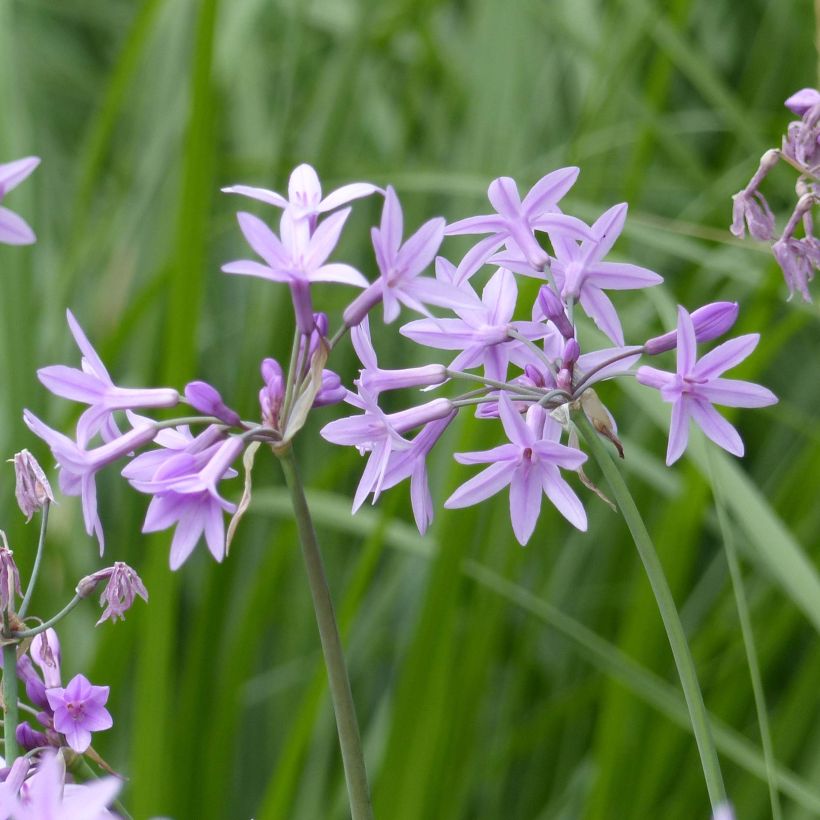

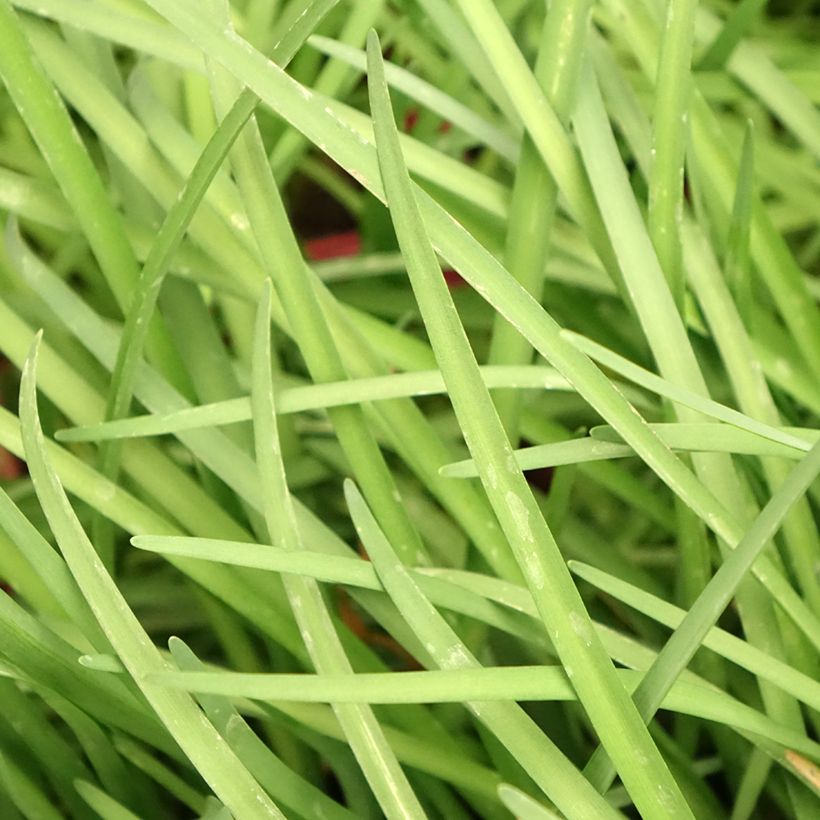

Plant habit
Flowering
Foliage
Botanical data
Tulbaghia
violacea
Amaryllidaceae
Society Garlic
Cultivar or hybrid
Other Tulbaghia
View all →Planting and care
Tulbaghia appreciates well-drained soils, whether slightly acidic, neutral or slightly calcareous. Its preference is for light and sandy soils. Its hardiness ,-10 to -12°C (14 to 10.4°F), will be reduced in wet and poorly drained soils in winter. A mixture of leaf compost and sand makes a good substrate for its cultivation. Choose a sunny or moderately shady position in our hottest and sunniest regions. It appreciates moist soils during its flowering period (spring-summer), but drier in autumn and winter. It tolerates sea spray perfectly.
Transplant your young plants into a pot about twenty centimetres in size containing 1/3 soil, 1/3 compost and 1/3 sand. Place them in a warm and well-lit place (but without direct sunlight) until the last frost. You can then take your container outside. Bring them indoors at the beginning of autumn when temperatures start to drop. In open ground, space the plants 20 cm (8in) apart. In autumn, cut back the clumps to 3 or 4 cm (1 or 2in) from the ground and mulch heavily to protect from the cold.
Planting period
Intended location
Care
Planting & care advice
-
, onOrder confirmed
Reply from on Promesse de fleurs
Similar products
Haven't found what you were looking for?
Hardiness is the lowest winter temperature a plant can endure without suffering serious damage or even dying. However, hardiness is affected by location (a sheltered area, such as a patio), protection (winter cover) and soil type (hardiness is improved by well-drained soil).

Photo Sharing Terms & Conditions
In order to encourage gardeners to interact and share their experiences, Promesse de fleurs offers various media enabling content to be uploaded onto its Site - in particular via the ‘Photo sharing’ module.
The User agrees to refrain from:
- Posting any content that is illegal, prejudicial, insulting, racist, inciteful to hatred, revisionist, contrary to public decency, that infringes on privacy or on the privacy rights of third parties, in particular the publicity rights of persons and goods, intellectual property rights, or the right to privacy.
- Submitting content on behalf of a third party;
- Impersonate the identity of a third party and/or publish any personal information about a third party;
In general, the User undertakes to refrain from any unethical behaviour.
All Content (in particular text, comments, files, images, photos, videos, creative works, etc.), which may be subject to property or intellectual property rights, image or other private rights, shall remain the property of the User, subject to the limited rights granted by the terms of the licence granted by Promesse de fleurs as stated below. Users are at liberty to publish or not to publish such Content on the Site, notably via the ‘Photo Sharing’ facility, and accept that this Content shall be made public and freely accessible, notably on the Internet.
Users further acknowledge, undertake to have ,and guarantee that they hold all necessary rights and permissions to publish such material on the Site, in particular with regard to the legislation in force pertaining to any privacy, property, intellectual property, image, or contractual rights, or rights of any other nature. By publishing such Content on the Site, Users acknowledge accepting full liability as publishers of the Content within the meaning of the law, and grant Promesse de fleurs, free of charge, an inclusive, worldwide licence for the said Content for the entire duration of its publication, including all reproduction, representation, up/downloading, displaying, performing, transmission, and storage rights.
Users also grant permission for their name to be linked to the Content and accept that this link may not always be made available.
By engaging in posting material, Users consent to their Content becoming automatically accessible on the Internet, in particular on other sites and/or blogs and/or web pages of the Promesse de fleurs site, including in particular social pages and the Promesse de fleurs catalogue.
Users may secure the removal of entrusted content free of charge by issuing a simple request via our contact form.
The flowering period indicated on our website applies to countries and regions located in USDA zone 8 (France, the United Kingdom, Ireland, the Netherlands, etc.)
It will vary according to where you live:
- In zones 9 to 10 (Italy, Spain, Greece, etc.), flowering will occur about 2 to 4 weeks earlier.
- In zones 6 to 7 (Germany, Poland, Slovenia, and lower mountainous regions), flowering will be delayed by 2 to 3 weeks.
- In zone 5 (Central Europe, Scandinavia), blooming will be delayed by 3 to 5 weeks.
In temperate climates, pruning of spring-flowering shrubs (forsythia, spireas, etc.) should be done just after flowering.
Pruning of summer-flowering shrubs (Indian Lilac, Perovskia, etc.) can be done in winter or spring.
In cold regions as well as with frost-sensitive plants, avoid pruning too early when severe frosts may still occur.
The planting period indicated on our website applies to countries and regions located in USDA zone 8 (France, United Kingdom, Ireland, Netherlands).
It will vary according to where you live:
- In Mediterranean zones (Marseille, Madrid, Milan, etc.), autumn and winter are the best planting periods.
- In continental zones (Strasbourg, Munich, Vienna, etc.), delay planting by 2 to 3 weeks in spring and bring it forward by 2 to 4 weeks in autumn.
- In mountainous regions (the Alps, Pyrenees, Carpathians, etc.), it is best to plant in late spring (May-June) or late summer (August-September).
The harvesting period indicated on our website applies to countries and regions in USDA zone 8 (France, England, Ireland, the Netherlands).
In colder areas (Scandinavia, Poland, Austria...) fruit and vegetable harvests are likely to be delayed by 3-4 weeks.
In warmer areas (Italy, Spain, Greece, etc.), harvesting will probably take place earlier, depending on weather conditions.
The sowing periods indicated on our website apply to countries and regions within USDA Zone 8 (France, UK, Ireland, Netherlands).
In colder areas (Scandinavia, Poland, Austria...), delay any outdoor sowing by 3-4 weeks, or sow under glass.
In warmer climes (Italy, Spain, Greece, etc.), bring outdoor sowing forward by a few weeks.






























